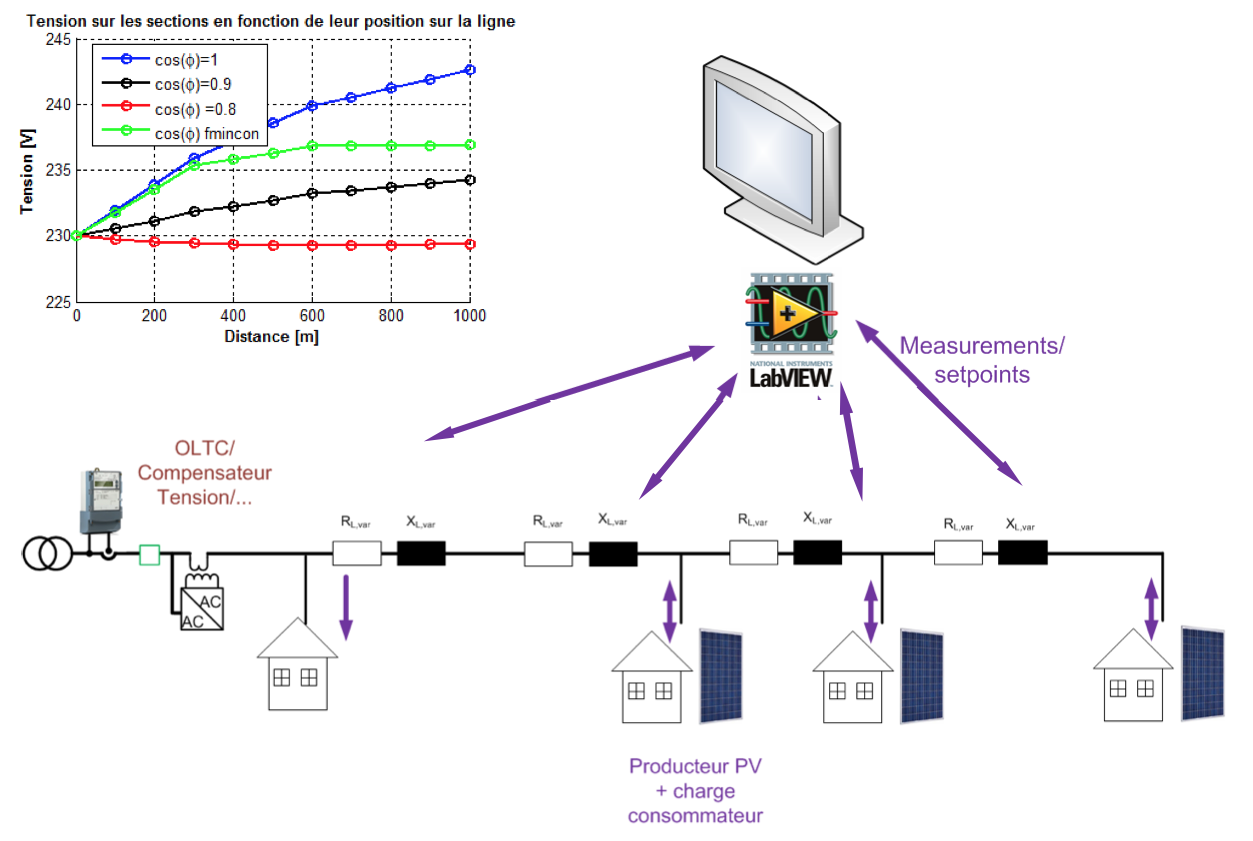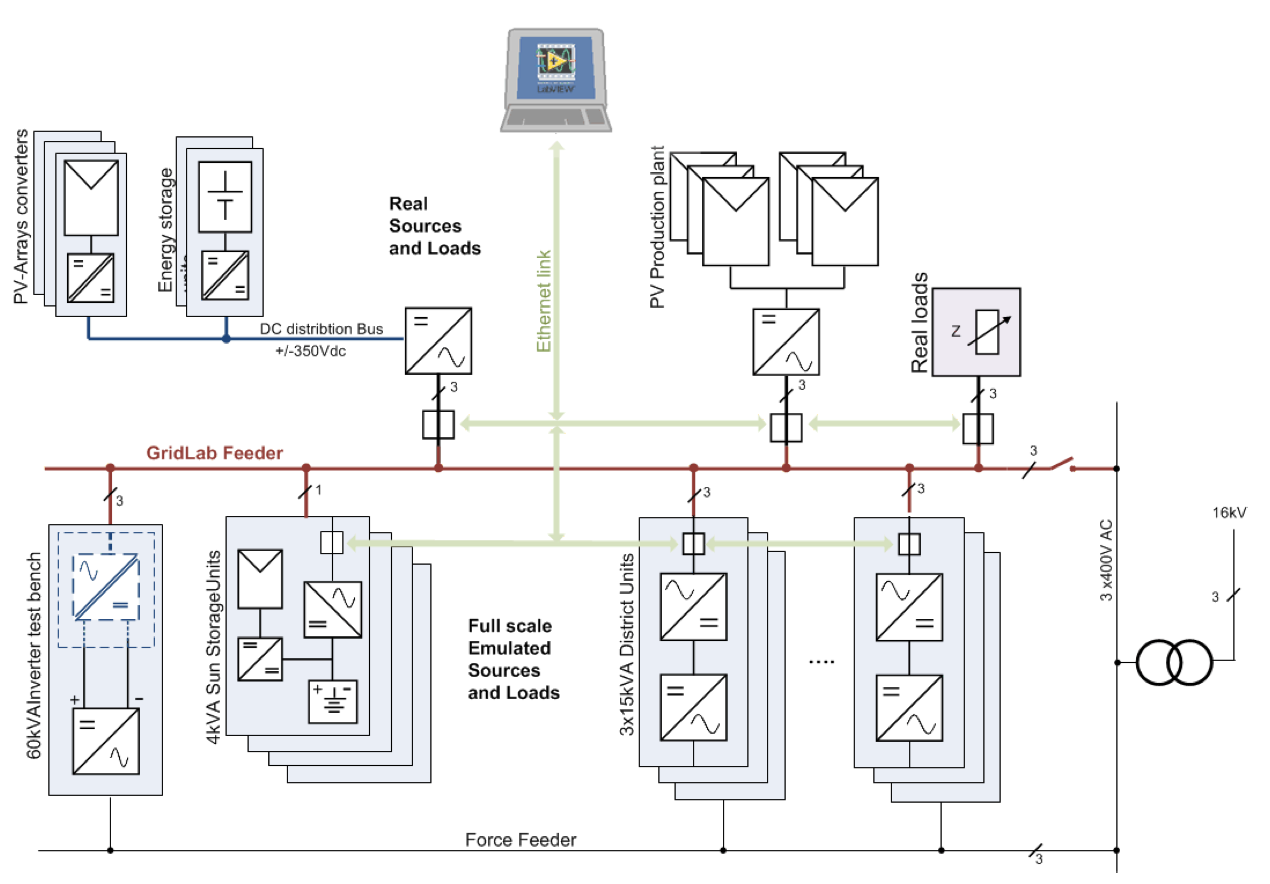Gridlab District
Authors: Fabrizio Sossan Last update: 01 February 2025
The district is a full-scale experimental platform that reproduces a real-world low-voltage distribution grid. We have four districts, each consisting of one grid connection point (a medium-to-low voltage substation transformer) and four nodes. Each node is capable to replicate the consumption and distributed generation patterns typical of residential or commercial consumers, using a back-to-back AC/DC converter supplied by a dedicated power line. The four districts can be assembled in series to form a 17-node distribution grid.

We use this setup to analyze the impact of renewable energy generation, such as photovoltaic systems, and the growing demand from electrified loads, like electric vehicles, on power distribution grids. Moreveor, we use it to test control strategies for congestion management and voltage control in distribution grids.
At the core of the GridLab LV is a 400 V AC three-phase power line, to which loads and converters are connected. The system is monitored by power, voltage and current (RMS) meters. The four districts are equipped with a dozen of static converters, for a total power capacity of 150 kVA. They are linked with emulated overhead lines or buried cable, spanning a total length of 500 meters. An Ethernet-based communication system enables the exchange of data between the meters, the converters and the controller.

This setup enables the creation of scenarios where distributed generation is used to maintain voltage levels within the tolerance range at every point of the distribution grid and current levels within the lines ampacities. It also facilitates the management of energy flow between generation sources, storage units, and consumers, either within a building or across the entire district.
For more information
- Prof. Fabrizio Sossan